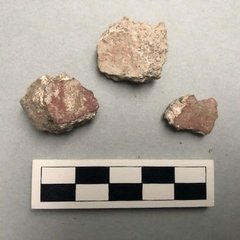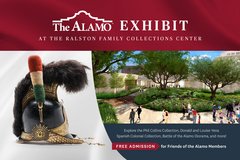Throughout the excavations this year inside the Long Barrack and Church, fragments of mortar with plaster have been recovered in many of the units. After construction of the Convento (know today as the Long Barrack), a plaster surface would have been applied to help protect the stone and mortar. Plaster is a material consisting of slaked lime and water.
A thicker concoction would be applied over mortar and stone to seal the walls. Plaster or lime wash would be periodically reapplied to keep the walls in good condition. The lime wash and plaster could be tinted by adding minerals and dyes.
During the excavations, some fragments exhibit plaster that appears to be white, indicating that there was likely no decorative treatment to the wash that was put on the structure walls. Others contain pigments that could be associated with color washes or decorative designs.
The photograph shows an example of a piece of mortar with white-wash and some faint red pigment, whereas the other two fragments exhibit dark red pigment covering the entire surface of the mortar fragment. The fact that there is pigment on the mortar fragments indicates that the interior of the Convento would have been painted, possibly with intricate designs. Finds like this are interesting and give Alamo Conservator Pamela Jary Rosser an opportunity to learn more about the wall treatments of the Convento.


